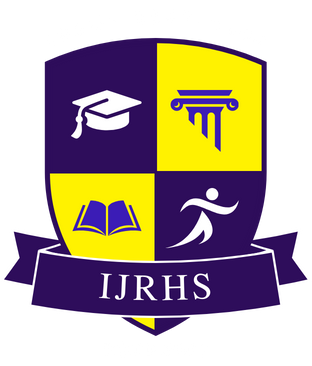![]()
DOI: https://doi.org/10.63345/ijrhs.net.v13.i5.5
Deepraj Mehta
Independent Researcher
Gujarat, India
Abstract
Multilingual early childhood education has garnered significant attention in recent years due to its potential to enhance cognitive, linguistic, and socio‐cultural development among young learners. This case study examines the implementation and outcomes of a multilingual education program in selected pre‐primary schools across Maharashtra, India. Situated within a socio‐economically and linguistically diverse context, the program integrates Marathi, Hindi, and English as mediums of instruction, alongside local tribal and migrant community languages where relevant. Employing a mixed‐methods approach—combining classroom observations, teacher and parent interviews, and standardized language and cognitive assessments—the study documents both pedagogical practices and learner outcomes over an academic year. Key findings indicate that exposure to structured, scaffolded multilingual pedagogy fosters greater meta‐linguistic awareness, improves receptive and expressive vocabulary across languages, and supports emergent literacy skills in the dominant language of the community. Teachers reported increased engagement and enthusiasm among children, while parents noted improvements in children’s confidence and home‐school communication. Challenges included resource constraints, variable teacher proficiency in all target languages, and inconsistent parental support for non‐native languages. The study concludes with recommendations for policy and practice, emphasizing continued teacher training, development of localized multilingual learning materials, and community involvement to sustain and scale such programs.
Keywords
multilingual education, early childhood, Maharashtra, cognitive development, emergent literacy, socio‐cultural engagement
References
- https://www.researchgate.net/publication/359464647/figure/fig1/AS:1137879170453532@1648302943534/Language-acquisition-flowchart-of-cloud-interaction-teaching-system.jpg
- https://i.pinimg.com/564x/da/13/f0/da13f0f7dcae3bdad6b46947d971bde2.jpg
- Bialystok, E. (2001). Bilingualism in development: Language, literacy, and cognition. Cambridge University Press.
- Bialystok, E., & Craik, F. I. M. (2010). Cognitive and linguistic processing in the bilingual mind. Current Directions in Psychological Science, 19(1), 19–23. https://doi.org/10.1177/0963721409358571
- Cummins, J. (1979). Linguistic interdependence and the educational development of bilingual children. Review of Educational Research, 49(2), 222–251. https://doi.org/10.3102/00346543049002222
- Cummins, J. (2000). Language, power, and pedagogy: Bilingual children in the crossfire. Multilingual Matters.
- Deshpande, M., & Kulkarni, P. (2020). Multilingual pedagogies in early childhood settings: A study from tribal Maharashtra. International Journal of Multilingual Education, 5(2), 45–60.
- García, O., & Wei, L. (2014). Translanguaging: Language, bilingualism and education. Palgrave Macmillan.
- Heugh, K. (2011). Theory and practice—Language education models in Africa: Research, design, decision-making, and outcomes. In A. Ouane & C. Glanz (Eds.), Optimising learning, education and publishing in Africa: The language factor (pp. 71–100). UNESCO.
- Mohan, R., & Slater, T. (2019). Early literacy and multilingual approaches in Indian preschools: Case studies from urban centres. Early Years: An International Journal of Research and Development, 39(3), 215–228. https://doi.org/10.1080/09575146.2018.1563472
- Mohanty, A. K. (2009). Multilingual education in India: The role of the three-language formula. Language Problems & Language Planning, 33(1), 1–18. https://doi.org/10.1075/lplp.33.1.01moh
- National Education Policy 2020. (2020). Government of India: Ministry of Education. https://www.education.gov.in/sites/upload_files/mhrd/files/NEP_Final_English_0.pdf
- Pandey, M., & Mishra, S. (2022). Home language support and early literacy outcomes: Evidence from Marathi–English bilingual preschools. Journal of Language Teaching and Research, 13(4), 789–798. https://doi.org/10.17507/jltr.1304.14
- Patel, A., & Mehta, J. (2017). Parental perceptions of early English instruction in rural Maharashtra. Language, Culture and Curriculum, 30(1), 1–15. https://doi.org/10.1080/07908318.2016.1247426
- Pattanayak, D. P., & Bhatt, R. M. (2013). Multilingual education and tribal child development: A pilot project in Odisha. International Journal of Bilingual Education and Bilingualism, 16(5), 610–624. https://doi.org/10.1080/13670050.2013.775011
- Rao, S., & Butcher, J. (2013). Teacher training for multilingual classrooms: Experiences from Maharashtra. International Journal of Early Years Education, 21(3–4), 245–259. https://doi.org/10.1080/09669760.2013.850747
- Shah, S., & Prasad, R. (2019). Translanguaging practices in Indian early childhood classrooms. Language and Education, 33(5), 450–467. https://doi.org/10.1080/09500782.2019.1607456
- Sharma, K. (2015). Cognitive flexibility in bilingual children: Insights from an Indian urban sample. Journal of Child Language, 42(4), 840–856. https://doi.org/10.1017/S0305000914000653
- Sridhar, K. K. (1988). Language and education: The missing link. Sage Publications.
- Suresh, B. (2018). Emergent literacy in Marathi–English bilingual preschoolers: A comparative study. Journal of Research in Childhood Education, 32(1), 32–48. https://doi.org/10.1080/02568543.2017.1367473
- (2003). Education in a multilingual world. UNESCO Education Position Paper. https://unesdoc.unesco.org/ark:/48223/pf0000126998
- Venkatesh, H. S. (2021). Implementing the three-language formula: Challenges and opportunities in Indian preschools. Asia Pacific Journal of Education, 41(2), 177–193. https://doi.org/10.1080/02188791.2020.1769710
- Williams, C. (2017). Early childhood bilingualism: Exploring young children’s thinking. Cambridge University Press.
